Having held an operating licence for less than 18 months, Chris Milner catches up with the Rail Operations Group, which has created a niche business moving rolling stock for repair and refurbishment.
DURING 2015, there became a noticeable increase in the number of empty stock trains moving around the network for repair, refurbishment, or to be placed in store, carrying a ‘Rail Operations Group’ headboard.
Just who the Rail Operations Group (ROG) was became apparent back in January when I first met managing director Karl Watts during a visit to Leicester MPD. The depot is operated by UK Rail Leasing, but inside the depot was Type 3 No. 37800, being refurbished for mainline use. Outside was Europhoenix-owned classmate No. 37884, which had been ROG’s main loco since it was granted an operating licence some months earlier. Clearly, Karl had plans for ROG.
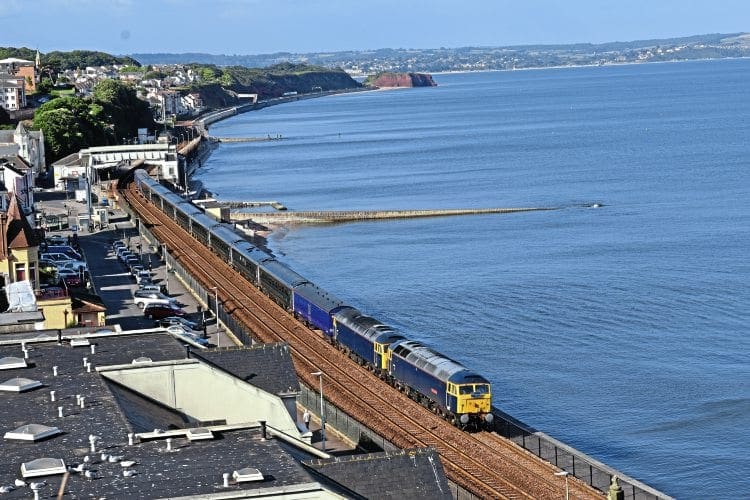
The company was formed three years ago (2013) as a provider of specialist train operator services. It had desires to be a train operator, but at that time lacked money and expertise.
Monthly Subscription: Enjoy more Railway Magazine reading each month with free delivery to you door, and access to over 100 years in the archive, all for just £5.35 per month.
Click here to subscribe & save
To build up the business, the company offered the industry a variety of services, including driver hire, driver training, management training, safety courses, and consultancy services, with an emphasis on operations.
In its initial days, the ROG had a small team, but those involved had a wide range of experience. For example, Karl was a former head of operations for GB Railfreight and was instrumental in setting up the contract to move the ‘S’ tube stock from Derby to Old Dalby for testing, and then on to LUL metals via Amersham. He had also been involved in freight and passenger operations, such as the IC225 introduction and also the Heathrow Express.
Operating licence
As the workload increased and a wider range of training was being offered, the company decided to revisit the prospect of an operating licence. After an application in November 2014, the licence was approved by the Office of Rail and Road in March 2015.
Behind the move for the licence, Karl and fellow directors Gary Prodger and Dave Burley had realised that there was a growing niche market for rolling stock movements.
Before the advent of ROG, such movements from depots to works or other sites for repair and refurbishment had been undertaken by freight companies, but because such moves were of an ad hoc nature, they were often cancelled at short notice.
Such cancellations might occur when the freight operator had only one driver available and needed to make the choice between cancelling a working timetable service (WTT) or the stock move. With the risk of a penalty from Network Rail for cancelling the WTT service, plus a loss of customer revenue, it is easy to understand why decisions were often made to favour WTT workings, and why rolling stock moves have suffered a second-class service. Not surprisingly, it had led to considerable dissatisfaction in some parts of the industry.
As part of its research in preparation for the operating licence application, ROG spoke to every leasing company, manufacturer and workshop undertaking repairs or refurbishments, and asked if they would commit to using the company if it could provide a service with no cancellations or other business distractions.
All gave positive replies and said that they would use a dedicated service.
Foundation stone
Inspired by the responses, ROG made moves for the licence, but also tweaked the business model, as revenue from stock movements would be variable, and so the consultancy and training business was formalised so as to smooth out the peaks and troughs from the stock transfer side.
With a detailed business plan created – which was needed for the licence application – it laid the foundation stone for the business to move on to the next level.
ROG ran its first train in May 2015, and after initially knocking on many doors, has found that clients – Bombardier, Siemens, Wabtec, Knorr-Bremse – as well as passenger-operating companies – GWR, SWT, Govia, London Midland, East Midlands Trains – are now coming to them, with their client base growing.
Only recently ROG signed a five-year multi-million pound contract with Angel Trains to undertake all of its DMU, EMU and HST movements.
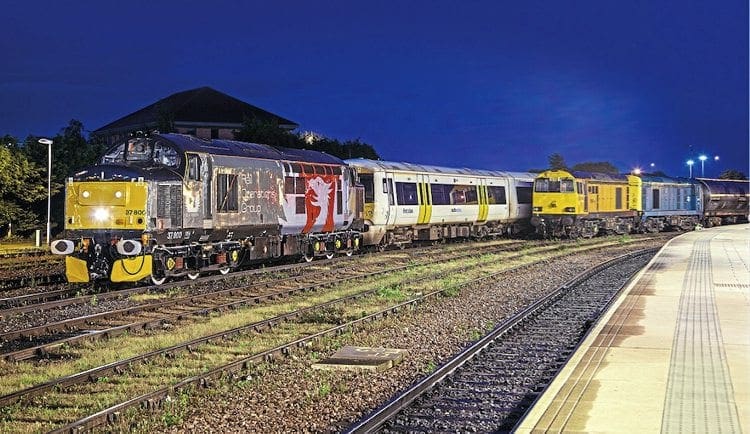
At the end of July, the company moved the first GWR Class 387 EMUs from Bombardier Derby to North Pole depot for the start of 25kV testing.
This, says Karl, is recognition of how far the company has come in a short time and the high esteem that industry partners hold for ROG, which puts customer service very high on its agenda. ROG engages with customers at all levels, from board director to the local shunter, keeping everyone informed, and leaving nothing assumed.
As mentioned earlier ROG started using a Class 37 owned by Europhoenix, and now has a second, both being fitted with special Dellner couplings for third-generation EMU haulage. This allows direct haulage of a multiple unit without the need for a translator coach, which would have coupling matching the DMU or EMU at each end. This Dellner coupler drops down when not in use allowing the conventional coupling and drawhook to be used.
In addition to the Dellner coupling, the two 37s are fitted with a ‘translator kit’ – a jumper
cable to connect the loco to the EMU/DMU’s electronics. This is a piece of equipment where one end mates with the unit’s electrical contacts under the Dellner coupling, the other being plugged into the loco’s 57-way jumper cable, linked to a control cabinet in the engine compartment.
‘Swinger’
The clever part is that when the driver applies the brake, electrical impulses are fed through the jumper cable to electronically apply the brakes on the EMU. In the Class 37 cab is an indicator panel that has lights for step 1, 2 or 3 brake applications and also emergency brake, so the driver knows that the unit’s braking is working in conjunction with the loco’s braking, and he’s not got a ‘swinger’. The electrical connections and control box replace the barrier vehicles so for everyone it has been a major step forward, and has sped up operations and movement times.
It also eliminates the time-consuming shunting of placing the barrier vehicles around the unit. The equipment has been undergoing test on Siemens EMUs, and successful completion means any Siemens EMU can now be moved without the need for barrier vehicles.
Because many second-generation multiple units that are destined for cascade or withdrawal have tightlock couplers, barrier vehicles are still needed, but aware of the need to move such units in the future, ROG is acquiring independent tightlocks, which can be fitted to locos in the same way as the Dellner. The couplings are removable so can be fitted to different locos as required.
While many ROG movements are formed of locos hauling EMUs, the company does move DMU sets without loco assistance, and recently moved a Class 159 for SWT from Wabtec Brush Loughborough to Salisbury depot.
The company has recently provided drivers for moving Network Rail’s Class 73/9 locos – Nos. 73951/952 – from Loram UK (formerly RVEL) Derby to the Severn Valley Railway for some additional testing.
The RM’s July issue covered the story of ROG buying five Class 47s from Riviera Trains. All five are fitted for multiple operation, and the company recently utilised a pair of the popular 1960s diesels on a movement of GWR Mk3 trailers from Laira to Wabtec Kilmarnock (see photo on p14/15). Such moves, says Karl, will always be double-headed for performance purposes so as to avoid costly schedule 8 penalty payments. Plus, with the higher proportion of multiple unit or fixed formation trains operating passengers services, a pair of Class 47s makes a very welcome change.
The Class 47s were offered to ROG with first refusal, and after due diligence and speaking to people like Harry Needle, who had recently worked on them, and knowing that the locos would not be an endless money pit, a price was agreed, and a deal done.
ROG has recently issued an invitation to tender for the Class 47 maintenance, specifying the need for ‘innovation and modifications’, with a decision on the winner due soon.
Before the locos were sub-leased last year to GBRf, a significant sum was spent improving their reliability, the work being undertaken at Barrow Hill, and the consensus is all five were in a good state of repair. Two are currently in traffic – Nos. 47812 and 47848 – the remainder stored at Nemesis, Burton-on-Trent, but are available for hire and can be activated quickly.
ROG intends to work closely with Riviera as part of the sale agreement and this is likely to mean movement of empty stock as required for railtour purposes.
New stock
The purchase could equally be viewed as positioning for the future. Karl explained that between now and the end of CP5 (Network Rail’s control period 5) at the end of 2019, around 2,500 DMUs, EMUs and loco-hauled carriages are due to be withdrawn as new stock comes on stream. All of these will need moving to store, but as mentioned in The RM (August, p9), these vehicles need a minimum of 35 miles of siding space, which is not available at present.
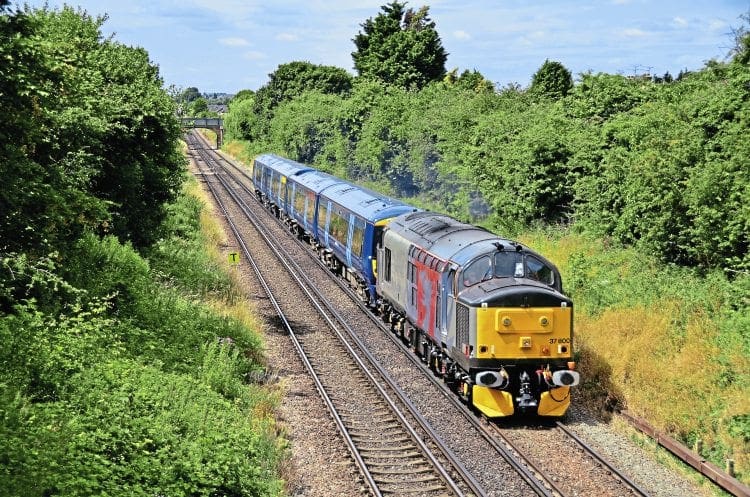
As many vehicles have a reasonable amount of residual life left in them they could be sold to fledgling operators here or overseas as was the case when 170 Mk2 carriages were sold to New Zealand rather than being scrapped. The decision rests with the leasing companies.
While some vehicles will be life expired, scrapping them brings with it an environmental and recycling headache. EU rules mean that while glass, plastic, fabrics and metal is recycled, items like transformer oil need special treatment, so scrapping is more of a dismantling exercise. There is also the possibility some of the older carriages may have asbestos, so again, specialist treatment might be needed.
Because of the small number of scrapyards which can handle rail vehicles, it is entirely possible that withdrawn units will move from depots to a secure site for initial stockpile, then on to the scrap man for disposal at a rate they can handle. ROG is well positioned to deal with the cascade or move for scrap of the older units.
With its stock movement business building up nicely, ROG says it is now moving into charter operations. Karl said that soon after getting a licence the topic of charters was debated, but with some nervousness in the market, the idea was put on a back burner.
However, it was because of approaches from one charter promoter, who wanted ROG to be one of its operators of choice, that the subject was revisited and a submission made to obtain a passenger licence, which was granted at the end of July.
One of the key areas of concern for ROG is that charter trains present a greater operational risk and the costs can outweigh the returns should a train fail and delay penalties begin clocking up at £64 per minute.
Karl says that ROG will undertake low-risk charter work that is simple and uncomplicated, but will use a pair of locos as ‘insurance’ against delay attribution risks. Their first charter was a Class 442 special for the Railway Children charity on August 29.
Talks are ongoing with other promoters, but Karl envisages that the company will create a separate charter train unit next year.
Surprisingly, there is a similar company in Germany, Rail Adventure, which moves stock for Siemens, CAF and Stadler, where old stock is being retired and new stock introduced. Karl is looking at whether there are any areas in which the two firms could work together.
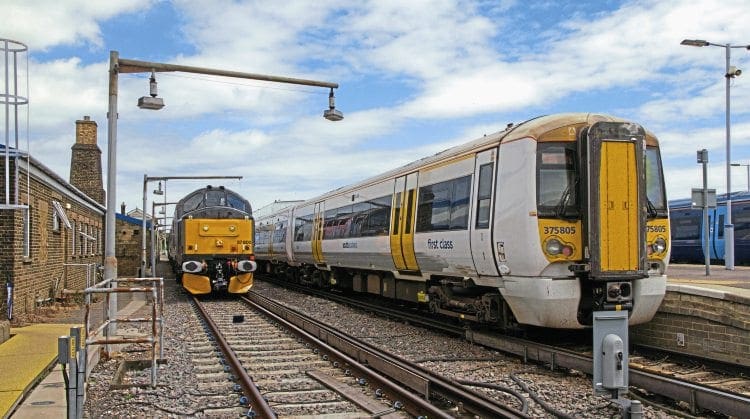
Since its inception, Rail Operations Group has grown to 16 full-time staff; none are on zero-hours contracts, all of the workforce being managers in their own right. As the company workload increases in the next 12-18 months, so will the number of staff.
One of Karl’s aims is that the company is seen by the industry to be different, yet retaining its uniqueness, along with a ‘can do’ attitude.
From my time with them that certainly stands out and sets ROG apart from the others.
Riding with the Rail Operations Group
Taking up Karl Watts’ invitation for a cab ride on the weekly 226-mile Derby Litchurch Lane to Ramsgate depot EMU move, at around 06.20, I climbed into the cab of immaculate Class 37 No. 37800 working 5Q58 at Leicester, where my host was driver Robin Hicks.
His morning started at an unearthly 03.00, preparing for the 04.40 departure from Bombardier’s works, where unit No. 375705 had been refurbished and was being returned.
Robin is one of ROGs managers, having started in the industry in 1978, progressing through the ranks and working as a driver for Eurostar from 1992-2000. He was head-hunted by GNER as an instructor when it took on Eurostar sets, later working in other parts of the industry dealing with safety critical communications: the Class 185 safety case management; being employed by Grand Central in 2006; becoming a driver team leader at King’s Cross; and moving to ROG for a new challenge.
Robin has a degree in French and also business studies, the former standing him in good stead while at Eurostar.
Anyone familiar with Leicester will know that the goods lines south of the station were removed during the 1986 resignalling scheme, creating a bottleneck through Knighton tunnel, only one of two twin-track bores being used.
Clear run
Although there are plans to reinstate the removed lines to Wigston in the future, our schedule called for a pathing stop until 06.43, while several other passenger and goods workings passed by. The bonus was that this gave us a clear run, accelerating quickly to 70mph on the way to Market Harborough, where the train slows for a permanent 65mph restriction.
My local knowledge enabled me to point out to Robin the alignment of the former LNWR Rugby to Peterborough line, part of which is now the station car park.
At Glendon Jct we were turned onto the slow line to run through platform 2 because of clearances on the fast line, time which was regained south of the station. Through Wellingborough, descending Sharnbrook summit, the new bridges for the now-deferred electrification scheme are evident, while at the bottom of the grade the train was switched to the slow line to cross the Great Ouse viaducts.
Approaching Bedford, where I began to notice the excess of vegetation that I referred to in my comment last month, we passed through the station, with flanges squealing over the junction at 15mph towards Bedford St Johns and access to the Marston Vale line. This was new territory for me as we headed along the rural line towards Bletchley past the redundant sidings at the former Stewartby brickworks and the massive Amazon warehouse at Ridgemont.
Rolling to a halt in platform 6 at Bletchley at 08.17 (as we were not booked off until 08.35), Robin phoned the signalman and asked if it was OK to have a short PNB (physical needs break). On confirming, Robin disappeared, returning five minutes later with a welcome cup of tea from the station buffet.
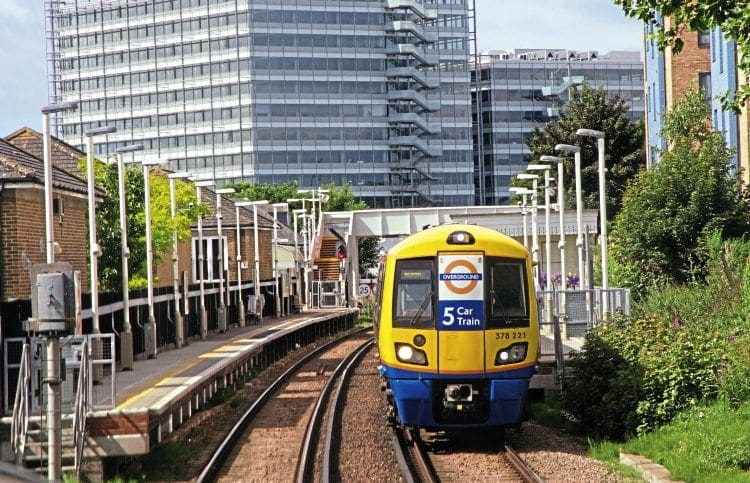
Getting the road at 08.28, seven minutes early, the loco set off, its characteristic sound reverberating under the concrete flyover.
The next section to Wembley yard, where there would be a crew change, was particularly interesting for me. Having travelled the line regularly for more than 20 years as a passenger, the view from the front end was a very welcome change.
Early into Wembley, we were met by Dave Atkinson, who would take the train to Ramsgate. As we waited for clearance to move, I discovered that he is another very experienced driver, coming to ROG from DB Schenker; previously based at Hither Green, she had a wealth of experience on a wide range of locos as well as being involved in several key projects.
Maze of lines
Setting off at 09.51, it was through the yard and under the WCML, routed via Acton Canal Wharf, Kew East and New Kew Junctions due to engineering work at Shepherd’s Bush. This is a fascinating route around west London before heading through Barnes and Clapham Junction and through the maze of lines past Longhedge and Factory Junctions, then through Herne Hill, Bickley, St Mary Cray and past the old HS1 connection at Fawkham Jct onto the North Kent line.
Here, Dave explained the line had been resignalled recently and the positioning of signals was mapped out using video technology in a classroom. What became noticeable was that signals were far more visible for greater distances than on the Midland or West Coast routes.
Still running early, it was over the Medway at Rochester before an easy run to Ramsgate arriving some 8 min early, which allowed me to thank Dave, and head off to catch the 13.05 ‘Javelin’ back to
St Pancras, using HS1.
The procedure is that the train parks in the road next to the depot, and because the refurbished unit is isolated, staff use another unit to shut it on depot and then attach an unrefurbished unit that is destined for Litchurch Lane.
The layover at Ramsgate is just over four hours, the unit being booked to depart at 17.13, running back via Canterbury West, Paddock Wood, Sevenoaks and Brixton.
Depending on Network Rail engineering requirements, on occasion the working lays over at Wembley Yard.
While north of the Thames, the early start doesn’t attract many photographers, but south of the river there are quite a few followers of this working that breaks the EMU monotony; some even put their footage on video sharing sites. ■
■ My thanks to Karl for arranging the trip and to Robin and Dave for hosting me in the cab.
The Railway Magazine Archive
Access to The Railway Magazine digital archive online, on your computer, tablet, and smartphone. The archive is now complete – with 120 years of back issues available, that’s 140,000 pages of your favourite rail news magazine.
The archive is available to subscribers of The Railway Magazine, and can be purchased as an add-on for just £24 per year. Existing subscribers should click the Add Archive button above, or call 01507 529529 – you will need your subscription details to hand. Follow @railwayarchive on Twitter.




